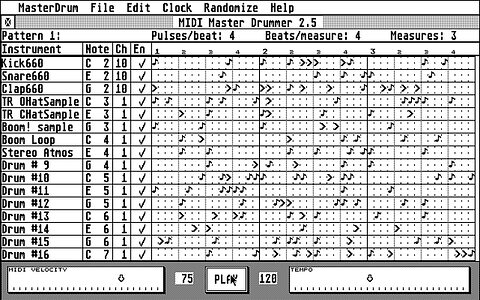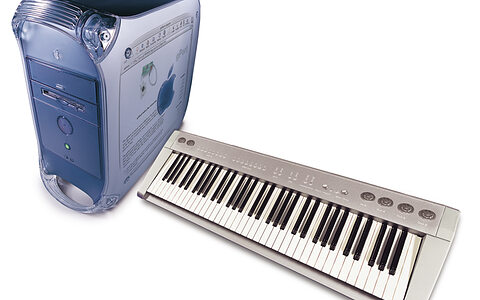
Broadcasting Your Audio: Part 1
Part 1 of a 2-part Net Notes in which Dave Shapton explores the theory and the practice of broadcasting your audio and video on the Internet.
To find the exact phrase, put the words in quotes or join them together with a plus sign e.g. live+recording or "live recording".
To find, say, all live recording articles that mention Avid, enter: live+recording +avid - and use sidebar filters to narrow down searches further.

Part 1 of a 2-part Net Notes in which Dave Shapton explores the theory and the practice of broadcasting your audio and video on the Internet.

Derek Johnson gets into the groove with an 'emailware' rhythm-creation program and goes analogue with an updated step-sequencer...

This month Vic Lennard looks at the practical implications of DirectConnect and possible problems when using the wrong system updaters...

Most people are familiar with basic reverb, delay and modulation effects, but what lies beyond? In the first part of a new series, Paul White explores the twilight zone of effects processing.

The music production software we now use has become so sophisticated that valuable features and techniques can often go unused simply through unfamiliarity. With this in mind, SOS has added new regular monthly columns dedicated to making the most of the leading programs. In this inaugural Cubase Notes, Martin Walker explains the use of the Scale Correction feature.

Software and hardware developments have made the 'studio in your PC' concept increasingly attractive, but many prospective users are put off by concerns about sound quality, timing, and the difficulty of adapting existing sample libraries. Many of these issues need no longer cause difficulty, however, as Martin Walker explains...

What do the manufacturer's frequency response figures tell you about your studio monitors? Less than you might think, as Phil Ward discovers...

The recent G3, G4 and iMac computers are fast and attractive to musicians, but they present various dilemmas when it comes to connecting your MIDI and audio interfaces. In part 1 of this short series, Paul Wiffen looks at the various ways to get MIDI data flowing reliably in the absence of ADB and serial ports.

I have a terrible dust problem in my studio. I have wooden floorboards, the gaps between them are sealed with silicone...

I was told that the quality of CD media and of the CD‑writing software package used can affect the sound quality of...

I am an audio engineer from the fair shores of New Zealand. The other day I was presented with an argument, and this...

I've recently bought myself a home studio setup (PC, Cubase VST, Alesis ADAT LX20 digital audio recorder, Akai...

Mike Senior answers some of the most common questions we receive about sending out demos, and helps you to make the kind of impression that will get your music heard.

I am searching for a mixer for an unusual application. I wish to mix the stereo output from my computer and to send it...

What's the difference between an audio CD I have burnt on a CD‑R and one that is produced 'professionally' at a...

The affordability and compactness of Minidisc, DCC and smaller DAT recorders makes gathering location sounds a lot easier than...

The last few weeks I have been recording using the Yamaha SW1000XG together with a Joemeek VC3 preamp/compressor. During...

Recording bass is ostensibly a simple affair, but often what sounds great in isolation lacks any power to penetrate a mix. The...

Paul White auditions some new active monitors from Fostex that offer a number of technical innovations.

Korg follow up their top-flight Triton workstation with a sophisticated rackmount expander. The new model sacrifices some features but enhances many others and adds support for the mLAN music network standard. Simon Trask racks it up.